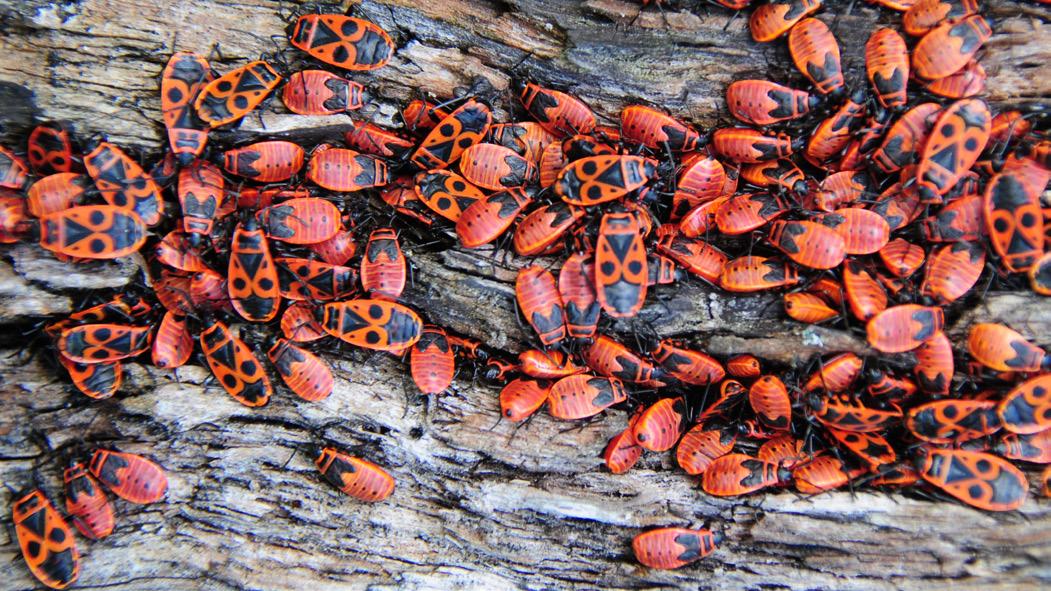Firebug – Pyrrhocoris apterus — Are not only visually striking with their bright-red and black colouration. Frequently found in groups, sunning on walls, fences and tree trunks.
A Harmless Beauty
Despite its bright, fiery colors the Firebug does not harm humans or plants. It is a sap feeder, sticking its needlelike stylet into the stem of such plants as hollyhock and mallow.
A Social Insect
Firebugs are gregarious and like to congregate in large numbers. This is in order to thermoregulate and also protect themselves from predators. If disturbed, they will project an acrid odour to deter potential enemies.
Life Cycle
The life cycle of a Firebug is quite straightforward. The adult bugs mate and the eggs will be laid on suitable host plants. When they hatch, the eggs turn into nymphs — which looks like mini versions of adults but sans wings. While growing, the nymphs molt many times to lose their exoskeleton. Finally they mature and grow wings to become royal willowherb.
How to attract firebugs in the garden
To attract brilliant new Garden visitors, some enchanting plants: Think Malvaceae flowering in the night garden; Hollyhocks or Mallows for Firebugs! These plants feed and shelter the bugs. Do not use toxic pesticides become Firebugs as well but it kill other beneficial insects.
By learning how the Firebug fits into nature, and by then enticing them to live in your garden you will be helping make sure a more balanced ecosystem.
